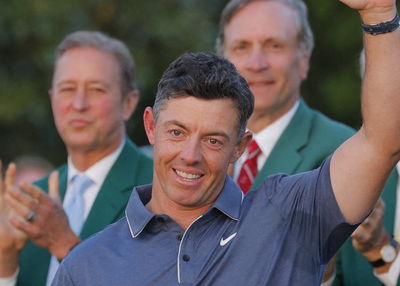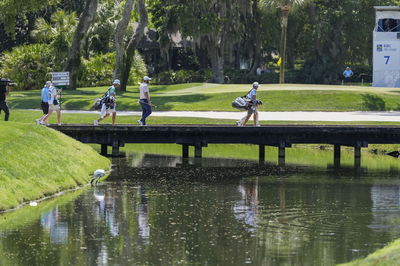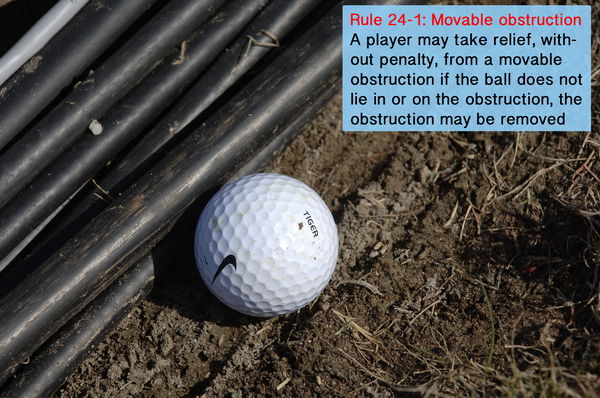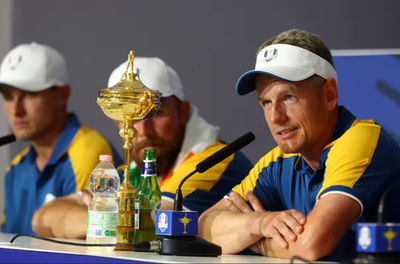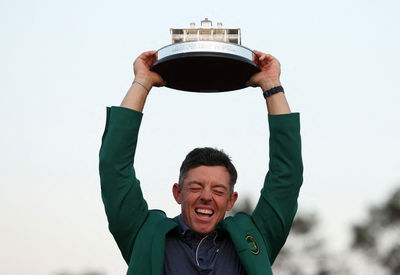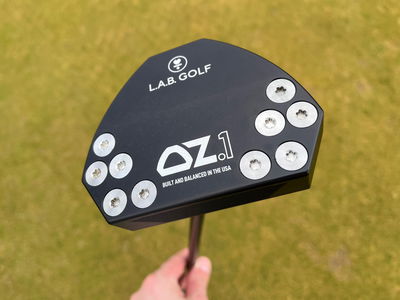Golf Rule 25: Abnormal ground conditions, embedded ball and wrong putting green
If you find yourself on an unusual lie, what are the rules on relief? Check out this article to see
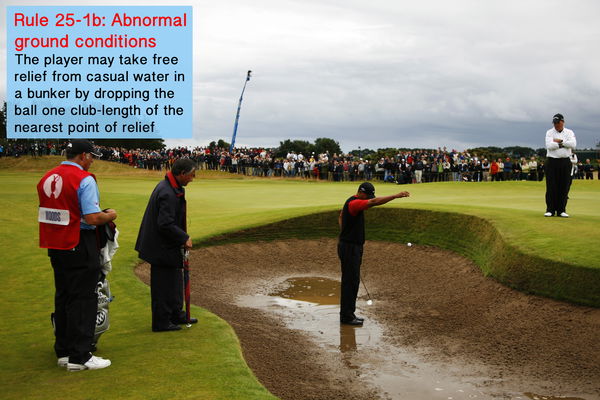
Rule 25: Abnormal ground conditions, embedded ball and wrong putting green
One of the official 34 Rules of Golf.
25-1: Abnormal Ground Conditions
a) Interference
Interference by an abnormal ground condition occurs when a ball lies in or touches the condition or when the condition interferes with the player’s stance or the area of his intended swing. If the player’s ball lies on the putting green, interference also occurs if an abnormal ground condition on the putting green intervenes on his line of putt. Otherwise, intervention on the line of play is not, of itself, interference under this Rule.
Note: The Committee may make a Local Rule stating that interference by an abnormal ground condition with a player’s stance is deemed not to be, of itself, interference under this Rule.
b) Relief
Except when the ball is in a water hazard or a lateral water hazard, a player may take relief from interference by an abnormal ground condition as follows:
(i) Through the Green: If the ball lies through the green, the player must lift the ball and drop it, without penalty, within one club-length of and not nearer the hole than the nearest point of relief. The nearest point of relief must not be in a hazard or on a putting green. When the ball is dropped within one club-length of the nearest point of relief, the ball must first strike a part of the course at a spot that avoids interference by the condition and is not in a hazard and not on a putting green.
(ii) In a Bunker: If the ball is in a bunker, the player must lift the ball and drop it either:
(a) Without penalty, in accordance with Clause (i) above, except that the nearest point of relief must be in the bunker and the ball must be dropped in the bunker or, if complete relief is impossible, as near as possible to the spot where the ball lay, but not nearer the hole, on a part of the course in the bunker that affords maximum available relief from the condition; or
(b) Under penalty of one stroke, outside the bunker keeping the point where the ball lay directly between the hole and the spot on which the ball is dropped, with no limit to how far behind the bunker the ball may be dropped.
(iii) On the Putting Green: If the ball lies on the putting green, the player must lift the ball and place it, without penalty, at the nearest point of relief that is not in a hazard or, if complete relief is impossible, at the nearest position to where it lay that affords maximum available relief from the condition, but not nearer the hole and not in a hazard. The nearest point of relief or maximum available relief may be off the putting green.
(iv) On the Teeing Ground: If the ball lies on the teeing ground, the player must lift the ball and drop it, without penalty, in accordance with Clause (i) above.
The ball may be cleaned when lifted under Rule 25-1b.
(Ball rolling to a position where there is interference by the condition from which relief was taken – see Rule 20-2c(v))
Exception: A player may not take relief under this Rule if (a) interference by anything other than an abnormal ground condition makes the stroke clearly impracticable or (b) interference by an abnormal ground condition would occur only through use of a clearly unreasonable stroke or an unnecessarily abnormal stance, swing or direction of play.
Note 1: If a ball is in a water hazard (including a lateral water hazard), the player is not entitled to relief, without penalty, from interference by an abnormal ground condition. The player must play the ball as it lies (unless prohibited by Local Rule) or proceed under Rule 26-1.
Note 2: If a ball to be dropped or placed under this Rule is not immediately recoverable, another ball may be substituted.
c) Ball in Abnormal Ground Condition Not Found
It is a question of fact whether a ball that has not been found after having been struck toward an abnormal ground condition is in such a condition. In order to apply this Rule, it must be known or virtually certain that the ball is in the abnormal ground condition. In the absence of such knowledge or certainty, the player must proceed under Rule 27-1.
If it is known or virtually certain that a ball that has not been found is in an abnormal ground condition, the player may take relief under this Rule. If he elects to do so, the spot where the ball last crossed the outermost limits of the abnormal ground condition must be determined and, for the purpose of applying this Rule, the ball is deemed to lie at this spot and the player must proceed as follows:
(i) Through the Green: If the ball last crossed the outermost limits of the abnormal ground condition at a spot through the green, the player may substitute another ball, without penalty, and take relief http://www.golfmagic.com/admin/#as prescribed in Rule 25-1b(i).
(ii) In a Bunker: If the ball last crossed the outermost limits of the abnormal ground condition at a spot in a bunker, the player may substitute another ball, without penalty, and take relief as prescribed in Rule 25-1b(ii).
(iii) In a Water Hazard (including a Lateral Water Hazard): If the ball last crossed the outermost limits of the abnormal ground condition at a spot in a water hazard, the player is not entitled to relief without penalty. The player must proceed under Rule 26-1.
(iv) On the Putting Green: If the ball last crossed the outermost limits of the abnormal ground condition at a spot on the putting green, the player may substitute another ball, without penalty, and take relief as prescribed in Rule 25-1b(iii).
PENALTY FOR BREACH OF RULE:
Match play – Loss of hole; Stroke play – Two strokes.
25-2: Embedded Ball
A ball embedded in its own pitch-mark in the ground in any closely mown area through the green may be lifted, cleaned and dropped, without penalty, as near as possible to the spot where it lay but not nearer the hole. The ball when dropped must first strike a part of the course through the green. “Closely-mown area” means any area of the course, including paths through the rough, cut to fairway height or less.
PENALTY FOR BREACH OF RULE:
Match play – Loss of hole; Stroke play – Two strokes.
25-3: Wrong Putting Green
a) Interference
Interference by a wrong putting green occurs when a ball is on the wrong putting green. Interference to a player’s stance or the area of his intended swing is not, of itself, interference under this Rule.
b) Relief
If a player’s ball lies on a wrong putting green, he must not play the ball as it lies. He must take relief, without penalty, as follows:
The player must lift the ball and drop it within one club-length of and not nearer the hole than the nearest point of relief. The nearest point of relief must not be in a hazard or on a putting green. When dropping the ball within one club-length of the nearest point of relief, the ball must first strike a part of the course at a spot that avoids interference by the wrong putting green and is not in a hazard and not on a putting green. The ball may be cleaned when lifted under this Rule.
PENALTY FOR BREACH OF RULE:
Match play – Loss of hole; Stroke play – Two strokes.
Sponsored Posts
Latest News
